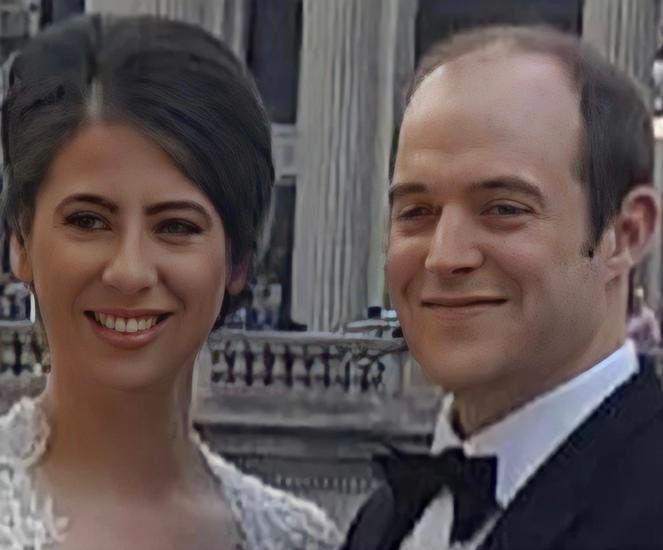Today we stand together. Family members and close friends, each with deep personal feelings and memories of Liam Ryan, stand alongside others too young to have known him. All of us can feel anger at his murder.
Surely, it is murder when the vaunted British crown forces arrange killings by loyalist proxies and paid agents. It is murder, even when the murder victim was, like Liam Ryan a Republican, or like Michael Devlin, in the company of a Republican, or as other families here know, the parent or aunt of a Republican.
All of us can be angered by the British policy of murder cover-up.
European Law says that the families of state murder victims have a right to justice. Britain deems such rights null and void when the victims are Republicans, or justice means ending the one-sided immunity or impunity for British troopers or constabulary.
Even today, families of the victims are still denied justice, still denied truth, still stonewalled and still told lies. Even an Ombudsman or Coroner, who makes the mistake of actually trying to get truth, soon finds they will be denied the funds or documents to do it.
All of us – and I do not want to be misinterpreted as speaking about armed actions in the different conditions and circumstances of today - but we are not here for any sorry initiatives, not here to demean his legacy by apologies. All of us are here to honor the memory of a true patriot with pride.
There is today another ongoing round of talks. Last year’s Haass talks have become this year’s Hart talks.
We frequently hear words like parity of esteem and equality. We will not accept a “parody of esteem” where we are expected to hide our grief, our anger, and our pride in this brave soldier, lest we give offense to others who believe Republicans in Ireland are not entitled to such feelings.
To understand Liam Ryan, first understand the times in which he lived. He was born before the British shifted from one party Orange rule, to granting shared space tied to an immovable DUP anchor, where every legitimate demand for justice, as Gregory Campbell so crudely said, can be treated like toilet paper.
Liam was born before civil rights marches. Because he was a Ryan from Ardboe, and where his parents sent him to church and school, that was enough to mark him as suspect, second class and someone the six county state could best do without.
They did their best to send this message with a whole system to deny nationalists jobs, housing, and gerrymander votes. Just to be sure he understood, the crown forces would remind him when they met him on the road.
It is easy to understand why when people speak of the beginnings of civil rights in the Six Counties, they speak of marches in Coalisland or Dungannon or the first housing sit-in by a Tyrone family. It was easy to understand why when British troopers proved they did not come to back civil rights but to impose Internment, and to shoot down those who got in the way at Ballymurphy, or protested in Derry, that Liam came to believe you would not never get civil rights from a regime ready to answer civil right protests with Bloody Sunday. He came to see that the injustices he lived under were no accident but were allowed by the British because they served British interests.
He went to New York where I would come to know him. He found a new life where being a Ryan from Ardboe, did not count against him and indeed often counted for him. He found work with the power company, Con Edison. He had sisters and cousins nearby.
He found an apartment near Gaelic Park where he spent Sundays. He found Tyrone Societies and Clan na Gael. And who could have blamed him if he enjoyed this new life and put thoughts of Tyrone or the six counties behind him, or perhaps attended a few protests outside the British Consulate, or given some money for Republican prisoners.
That was not Liam. You could take Liam Ryan out of Tyrone but never take Tyrone out of Liam Ryan. The struggle and injustices here were never out of his thoughts. His dream was always to live and raise a family in a Tyrone where the injustices he lived under were a thing of the past. He dedicated his life to help make that so.
He worked in Clan na Gael and with Irish Northern Aid. He was one of those men and women from the Six Counties who were a constant inspiration and reminder to all of us. They were the vanguard of everything we in America did to raise money for the families of political prisoners or to build American political support for Irish issues.
He made his home a refuge and landing spot for others. There I would first come to hear of Gerry McGeough. He cannot be here because he is under threat of Internment by License. Gerry McGeough, like Ivor Bell, or Seamus Kearney and others are living reminders that the British will go back thirty or forty years and have no shortage of money to trump up charges against some republicans. They then tell us there is no money to arrest the Bloody Sunday troopers, or give the Ballymurphy Massacre families an inquiry, or take any steps which threaten the blanket immunity or impunity for British troopers and constabulary.
There I first met Lawrence McNally who would die alongside Liam‘s cousin Pete, and Tony Doris. Their car was fired upon until it burst into flames. They still cannot get an Inquest.
I remember asking why Lawrence had given instructions to be buried in Monaghan instead of Tyrone. I was told so that that so he could be buried and mourned without his grave and family being abused by crown forces. The next day I saw Pete Ryan’s family jeered and taunted about barbecues and barely let out of their homes to bury him. How right Lawrence had been.
As he was preparing to come back he was arrested in New York for sending weapons to the IRA. He faced a possible jail sentence. His lawyer, friends including myself, pressured him to apologize as is customary in American courts. He told us he had done no more than one of his relatives who had helped Erskine Childers bring arms into Dublin for the Easter Rising. Finally he agreed to make an apology in the American court.
Liam told the Judge that the only apology he wanted to make was to apologize to the IRA Volunteers who did not get the weapons. Judge Sifton, who had no Irish connections, but who presided over several Irish trials, smiled and said that the Irish accused like Liam were unlike the criminals who came before him and let him go with unsupervised probation.
He came back to Tyrone to open the Battery. I was banned from the North and the British had used my presence to attack a peaceful rally in Belfast. So we could meet in Dublin, or more likely Monaghan, but not in the Battery Bar in Ardboe, County Tyrone.
“We will have you up at the Battery for a free drink,” Liam joked when I telephoned him twenty-five years ago to say I would be traveling to Dublin for weekend meetings between the Irish Northern Aid executive and Sinn Fein leadership.
“Our friends have been about this last week,” he continued. It meant that the Royal Ulster Constabulary, backed by British troopers, had been patrolling heavily in the Ardboe area.
He added, “I may be back in the Bronx with you, but will say more when I see you.”
These words were ominous. For Liam to hint at leaving Ardboe meant that he was under serious threat which he would not talk about on a likely tapped telephone line, but would explain when we met.
I would never see him again. The following evening the crown forces which had been flooding the Ardboe area would suddenly disappear. At closing, as Liam Ryan stood by the door, a loyalist death squad would arrive at precisely the correct time and place.
Liam Ryan would be murdered as he attempted to slam the door shut and protect those patrons still inside. It was taken for granted that the British crown forces had given the intelligence, cleared and shielded the arrival and escape of the murder gang. The RUC would eventually arrive, with smug smiles, not bothering any pretense of sympathy, as they dismissed any chance that anyone might ever be caught or identified.
There was a phrase often used on newscasts about incidents which had “all the hallmarks” of the IRA. Liam’s murder had all the hallmarks of a crown directed collusion murder.
How could crown collusion in so many murders at such a high level of cooperation over so wide an area and so long a time continue without the knowledge and approval of the British at the highest levels?
There is now another round of talks that is supposed to tell us agreed formulas and legal mechanisms to deal with past events like Liam Ryan’s murder.
I cannot speak of him without remembering that he was murdered because he wanted freedom for all of Ireland so deeply. Many hoped that the Good Friday agreement had opened the door to this freedom. It seems clear that the British saw it as a way to nail the door shut.
We are less than eighteen months from the centenary of the Easter Rising, and that pledge of freedom, which Liam Ryan always said should apply as much to Thomas Clarke’s county as anywhere else.
This is an edited version of a recent speech delivered by Martin Galvin in Co. Tyrone at an event commemorating the death of Liam Ryan, Tyrone native and U.S. citizen.









